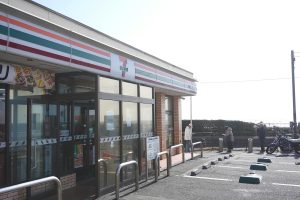Hybrid Shopping: Seamlessly Blending Online and Offline Experiences
In today’s digital age, shopping has taken on a whole new meaning. We no longer have to brave the crowds at the mall or rush to the stores before closing time. With the rise of online shopping, we can now make purchases from the comfort of our own home, anytime and anywhere. But what if we told you that there is a new shopping experience that combines the convenience of online shopping with the tactile experience of brick and mortar stores? This is where hybrid shopping comes in – seamlessly blending the best of both worlds, online and offline experiences.
The Rise of Hybrid Shopping
With the ever-growing popularity of e-commerce sites like Amazon and the convenience of online shopping, traditional brick and mortar stores have struggled to keep up. Many have closed down or shifted their focus to online sales. However, there is still a big demand for in-store shopping experiences. According to a survey by MarketingSherpa, 71% of consumers prefer to shop in-store compared to online because they can touch, try on and experience the products before making a purchase.
On the other hand, online shopping offers the convenience of browsing and purchasing products with just a few clicks. Customers can compare prices, read reviews, and have their purchases delivered right to their doorstep. But what if we could combine the convenience of online shopping with the tactile experience of brick and mortar stores? This is where hybrid shopping comes in.
The Concept of Hybrid Shopping
Hybrid shopping is defined as a shopping experience that bridges the gap between online and offline channels. It allows customers to seamlessly switch between both channels, giving them the best of both worlds. For instance, customers can research and buy a product online, but pick it up in-store, or they can browse and try on clothes in-store, but make the actual purchase online.
One of the pioneers of hybrid shopping is Walmart. They offer free same-day pickup for online orders at their physical stores, providing customers with the convenience of online shopping and the option to return or exchange items in-store. Another example is Nordstrom’s Local stores, which bridge the gap between their online and physical stores by offering services like alterations, styling sessions and local delivery of online purchases.
The Benefits of Hybrid Shopping
Convenience
Hybrid shopping offers ultimate convenience, giving customers the flexibility to choose how they want to shop. They can research products and make purchases whenever and wherever, without being tied down to store hours or location. This is especially helpful for busy individuals who don’t have time to physically go to a store or those who live in rural areas without easy access to physical stores.
Personalized Experience
Combining the online and offline shopping experience allows for a more personalized shopping experience for customers. Online shopping provides data and insights about customers’ preferences and buying behaviors, making it easier for retailers to personalize their offerings and promotions for each individual. This personal touch can also extend to the in-store experience, where customers can receive tailored recommendations or exclusive discounts based on their previous online purchases.
Cost Savings
For retailers, hybrid shopping can save costs in terms of store space, inventory management, and overhead costs. By leveraging e-commerce, retailers can have a smaller physical store, reducing costs associated with rent and utilities. They can also manage inventory more efficiently by integrating their online and offline systems, reducing the chances of overstocking or understocking products.
The Future of Hybrid Shopping
As technology continues to advance, the possibilities for hybrid shopping are endless. Virtual reality and augmented reality are already being used to enhance the online shopping experience, and soon it could also be incorporated into the in-store experience. Imagine being able to try on clothes virtually in-store or seeing how furniture will look in your home before making a purchase.
The COVID-19 pandemic has also accelerated the growth of hybrid shopping, as customers turned to online shopping for safety reasons, but still crave the in-store experience. Retailers who have successfully adopted hybrid shopping will continue to thrive in this ever-evolving retail landscape.
In Conclusion
Hybrid shopping is the future of retail. By seamlessly blending online and offline experiences, customers can enjoy the convenience of e-commerce and the in-store experience all in one. For retailers, it offers cost savings, personalization, and the opportunity to stay ahead in a highly competitive market. As technology evolves and customer preferences change, we can expect hybrid shopping to continue to grow and become the preferred shopping method for many consumers. So, are you ready to embrace hybrid shopping and give your customers the ultimate shopping experience?










